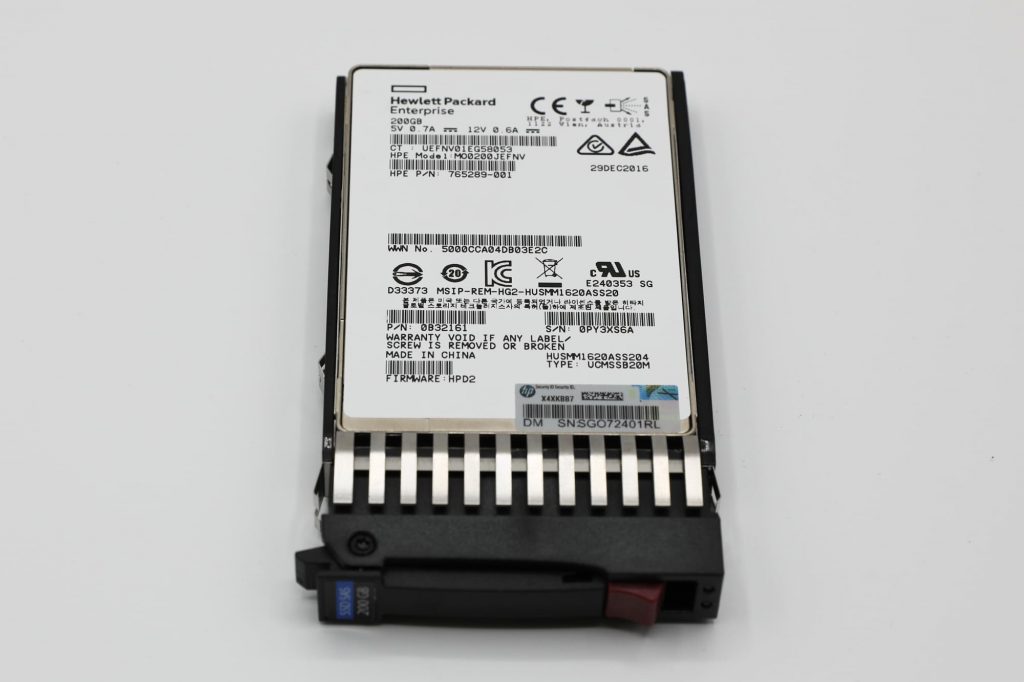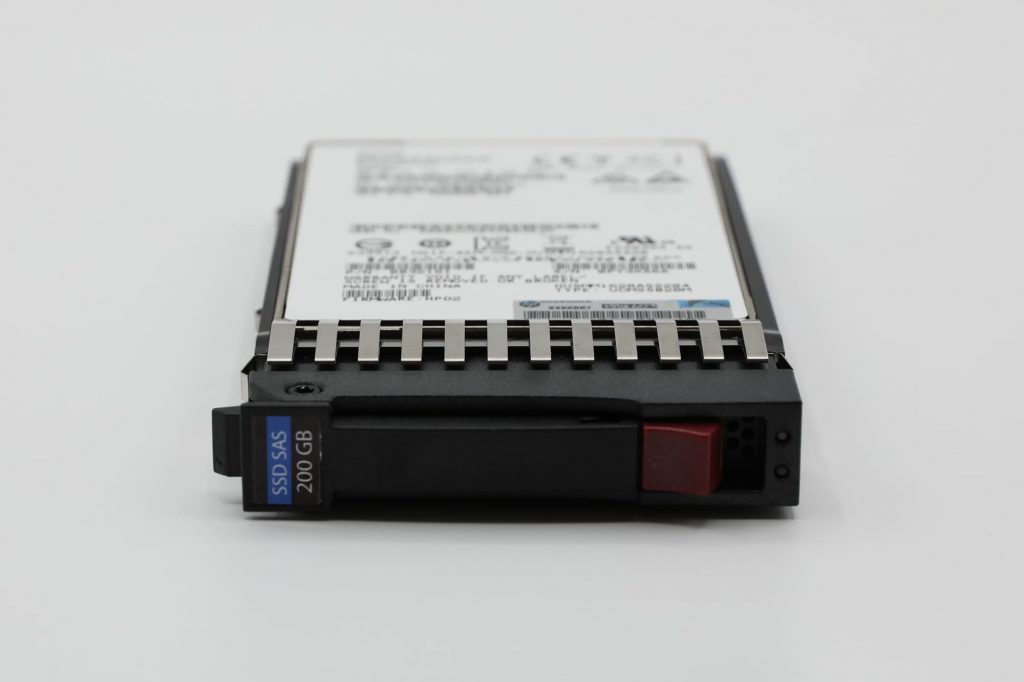Data recovery from SAS Enterprise SSDs is distinguished by its specificity, associated with its design features and interface. In the past, hard drives for servers and regular home computers were vastly different and incompatible. In servers, as a rule, SCSI hard drives were installed. With the development of technology, the interface of hard drives has changed.
Currently, SATA hard drives are used in home and office computers, and the SAS connector is more versatile than the old SCSI connector and is SATA compatible in form factor. This means that certain SATA drives can be connected to the SAS interface.
Thus, in one disk array it is possible to combine, depending on the need, hard disks of different performance, types, and volumes. No matter how reliable the SAS interface is, it can still fail. Below our technicians listed the main causes of the SAS SSD model failure.
Causes of Failure of The Enterprise Solid-State Drive
Incorrect Power Connection
For an external hard drive, this may be an incompatible power adapter. For internal hard drives, the power supply connector may be reversed 180 degrees.
Overheating
A faulty or poor-quality system unit ventilation system, a covered external hard drive, or a dusty cooling radiator are the first issues of hard drive electronics and mechanics.
Liquid Spillage
The SSD may be splashed with water, drinks, rained, or dropped into water. Turning on a wet hard drive will almost certainly end in a flash and a trip to the lab.
Enterprise Performance SSD Data Recovery
Recently, our company received a server admin’s data recovery request for an SSD drive. They had a 200GB Serial Attached SCSI Hot-Plug Enterprise-level Solid-State Drive, which failed, leading to partial data loss on the server.
After researching, the client decided to entrust his device to RAID Recovery Services and sent the SSD for our evaluation. Our dedicated customer services representative ensured that the customer safely packed the SSD before shipping. This way, no electrostatic discharge or mechanical damage could harm the drive.
The data recovery experts received the media storage and immediately started the diagnostics. They perform inspection in 2 main steps: Visual and Instrumental.
Technical Inspection at Our Laboratory
Visual control of the integrity of the board’s electronic components is performed first. Semiconductor devices during a breakdown are very different from serviceable ones: they can get very hot and change color and break down. The chips on the voltage formers are very clearly visible in the microscope.
The suppressors go into short circuit mode, and a dark spot forms around them. Instrumental control is produced RPI with the help of control and measuring equipment: voltmeters, ohmmeters, and combined instruments; if necessary, an oscilloscope and a frequency counter are used.
In most cases, a voltmeter and an ohmmeter to determine a short circuit are sufficient to diagnose a repairable electronics board.

The inspection revealed that due to the overloading and subsequent overheating, the PCB was damaged, but the NAND chips were unharmed. The printed circuit board damage means that after extracting the data from NAND chips, we had to restore them.
SAS SSD Data Recovery Services
A printed circuit board is a plate on the surface of which the electrically conductive circuits of an electronic circuit are formed. The PCB is designed for the electrical and mechanical connection of various electronic components. Electronic components on a printed circuit board are connected with their leads to the elements of the conductive pattern, usually by soldering.
Our technician safely unsoldered the NAND memory chips and used a hardware programmer to read all the data to a new SSD. As only the PCB was damaged, all the data were accessed. All the extracted files were in RAW. It is a digital image format containing data without structures. They became unreadable, so the operating system could not open the damaged files.
SAS SSD Data Recovery Services
Our technicians started the restoration of the RAW files by using our advanced file recovery methods. The scripts used in this recovery option are called a key, which lets our technicians quickly restore the file table containing all the metadata.

We restored all the data and transferred it from the damaged media storage to a new SSD. We shipped the drive back to the client after he reviewed and approved the results.
Thanks to years of experience in the industry and cutting-edge data recovery tools, we maintain the highest in the industry, a 99% success rate for recovering lost data from various storage devices.
Our highly trained experts will recover lost data securely and professionally. Contact RAID Recovery Services at (888) 611-0737 to request professional SSD, HDD, or RAID data retrieval solutions.
FAQ - Enterprise Level SSD Recovered
SSD restoration involves the process of returning a solid-state drive (SSD) to its original state of functionality. This can include data recovery, repairing file systems, or reinstating the SSD’s performance levels.
Enterprise-level SSDs often incorporate more complex architectures and larger data capacities than consumer-grade SSDs. Data recovery from these devices requires specialized tools and expertise to handle advanced encryption, wear-leveling algorithms, and other enterprise-specific technologies.
The possibility of data recovery depends on the nature of the SSD’s failure. While software-based errors and logical failures often allow for high recovery success rates, physical damage to the SSD may significantly lower the chances of successful data retrieval.
Attempting DIY recovery on an enterprise-level SSD is generally not recommended. These devices contain sensitive data and complex mechanisms that can further be damaged by unprofessional handling. It’s safer to consult with professionals who have the requisite expertise and tools.
It’s essential to regularly back up your data on an external storage device to minimize the risk of data loss. Additionally, ensure that you have proper cooling and ventilation for your SSDs, as excessive heat can cause damage over time. Continuously monitoring the health